
Welcome to the third part of this blog series about the world of The Dragon: Genesis. If you missed part two about the cursus honorum in ancient Rome, you can check it out HERE.
In Part III we are heading to what was once one of the most violent frontiers in the Roman Empire where, in the early second century A.D., one of the most famous of Rome’s military campaigns was waged. We’re heading into Dacia.
This is not, however, an in-depth study of the Roman campaign to conquer Dacia, but rather of the later division of the province, a move that heralded the importance of this province, and its resources, to Rome.
The ancient kingdom of Dacia, even now, conjures images of dark, mountainous forests where fearless warriors dwelled and worshiped strange gods. Today, the ancient lands of the Dacians comprise the region of modern Romania that strikes fear into the hearts of many: Transylvania.
But when the Romans waged war in Dacia, they were not fighting vampires or werewolves (read The Carpathian Interlude for that!). They were fighting a hearty race of warriors who would not be cowed by Rome’s might, and for years, the eyes of the Empire were set upon this area of Rome’s northern frontier.

The Carpathian Mountains
Rome and Dacian had been at odds for decades before the Emperor Trajan and his legions marched across the Danube.
Truly, Dacian aggression had received a boost since the defeat of a Roman army at the battle of Histria (c. 62 B.C.), during the Mithridatic Wars, under the great Dacian King, Burebista. Many years later, there was a resurgence in Dacian pride under King Duras who, in A.D. 85 attacked the Roman province of Moesia. Rome was defeated again by the Dacians at the battle of Tapae in A.D. 88. After this, Rome strengthened the front, but it was widely suspected that Dacia would have to be dealt with.
Enter emperor Trajan. He is perhaps the reason we are so familiar with the name of Dacia.
Emperor Trajan invaded Dacia in two big campaigns in A.D. 101-102 and A.D. 105-106, not only to end Dacian aggression, but also to annex a new province for Rome that was extremely rich in resources.
After spending some time in Rome he [Trajan] made a campaign against the Dacians; for he took into account their past deeds and was grieved at the amount of money they were receiving annually, and he also observed that their power and their pride were increasing. Decebalus, learning of his advance, became frightened, since he well knew that on the former occasion it was not the Romans that he had conquered, but Domitian, whereas now he would be fighting against both Romans and Trajan, the emperor. (Cassius Dio; Roman History, Book LXVIII)
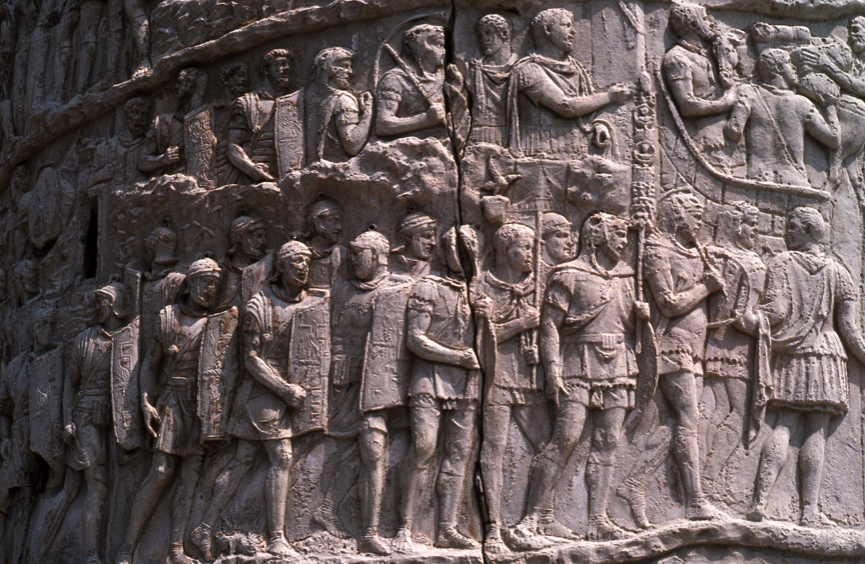
Roman troops with Emperor Trajan
Trajan crossed the Danube into Dacia with 50,000 troops in A.D. 101. After the second battle of Tapae, in which the Dacian king, Decebalus, was defeated, the Romans pressed on toward the Dacian capital of Sarmizegethusa. The Dacian king was no fool, however, and he sought terms so that he could fight another day.
That day came in A.D. 105 when the Dacians attacked Roman outposts. This time, Emperor Trajan marched into Dacia and destroyed Sarmizegethusa. Decebalus committed suicide. The campaign is portrayed on the famous monument we now know as Trajan’s Column.
Despite some resistance under the Dacian king, Bicilis, Dacia became a new Roman province.
Trajan, having crossed the Ister by means of the bridge, conducted the war with safe prudence rather than with haste, and eventually, after a hard struggle, vanquished the Dacians. In the course of the campaign he himself performed many deeds of good generalship and bravery, and his troops ran many risks and displayed great prowess on his behalf. It was here that a certain horseman, after being carried, badly wounded, from the battle in the hope that he could be healed, when he found that he could not recover, rushed from his tent (for his injury had not yet reached his heart) and, taking his place once more in the line, perished after displaying great feats of valour. Decebalus, when his capital and all his territory had been occupied and he was himself in danger of being captured, committed suicide; and his head was brought to Rome. In this way Dacia became subject to the Romans, and Trajan founded cities there. The treasures of Decebalus were also discovered… (Cassius Dio; Roman History, Book LXVIII)
In conquering Dacia, Rome managed to add a resource-rich province to the empire. It was an extremely fertile land, perfect for agriculture, especially grain, which Rome always needed more of. The lands were ideally suited for livestock breeding, and the mountains yielded something which most civilizations hunger for: gold.
Over the years, Rome invested in massive mining operations in the province of Dacia and that, coupled with the other industries, meant that peace in Dacia would be highly profitable. Massive building projects were undertaken over the years with roads connecting military camps and ten cities, eight of which were coloniae where veteran troops were settled to begin new lives and families as part of the massive colonization project.
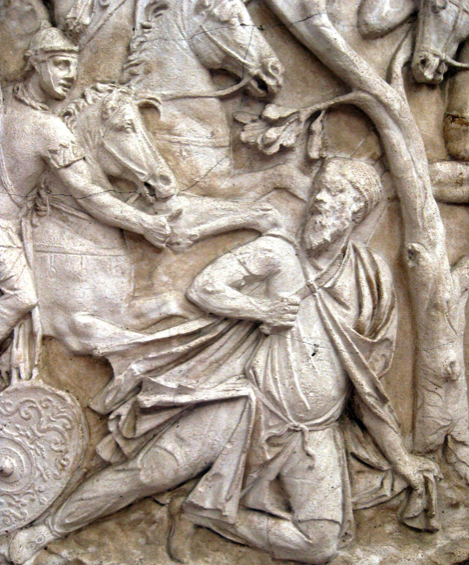
Trajan’s Column – King Decebalus commits suicide as Roman cavalry closes in on him
Dacia was developed into a new, urban province, and Rome was eager to protect this investment with a permanent garrison of about 35,000 troops which included two legions and up to forty auxiliary units.
At first, Rome had two administrative centres in Dacia. The first was Ulpia Traiana Sarmizegethusa, located just forty kilometres from the former Dacian capital of Sarmizegethusa Regia. This was the seat of the imperial procurator, Rome’s head finance officer in the province. The second main city at the time was Apulum. This was the seat of the military governor in Dacia, the greatest city in the province, and one of the largest along the entire Danube frontier. The XIII Gemina Legion was based there (the same legion that crossed the Rubicon with Caesar long before) within the walls of a fortress that covered 93 acres (37.5 hectares).
There was peace in Dacia after the conquest, but it was not without threat. Around the fringes of Rome’s new province, in the eastern Carpathian mountains and elsewhere, the ‘Free Dacians’, those tribes not under Rome’s direct control, posed a constant threat. That threat merited the massive garrison that was present in Roman-controlled Dacia. In the years to come, the Free Dacians would ally themselves with the powerful Sarmatians who would later put up a strong resistance to the later emperor, Marcus Aurelius.

Roman Dacia with Apulum in the middle, just east of the Dacian gold mines
During the reign of Emperor Hadrian (A.D. 117-138), Rome almost withdrew from Dacia because of problems with the Free Dacians, but also the issues that arose from administering the province. Changes were needed, and rather than pulling out of Dacia, Hadrian decided to make some adjustments.
Dacia was to be divided into two, with a second province of Dacia Porolissensis being created in western Transylvania. The high officials now included an imperial legate with consular powers, two legionary legates in charge of the two permanent legions, and the imperial procurator in change of finance.
In the novel, The Dragon: Genesis, however, the time period we are most concerned with is the reign of Emperor Antoninus Pius (A.D. 138-161). Hadrian’s adjustments made a difference but it became clear that more was needed in Dacia, and Antoninus Pius took advantage of the period of peace in Dacia to take action.
Massive repairs were made to the infrastructure of Dacia. All roads were repaired, fortresses were reinforced and updated to be more permanent, and the structures of the coloniae and other urban settlements were repaired. One such site was the great amphitheatre of Ulpia Traiana Sarmizegethusa.
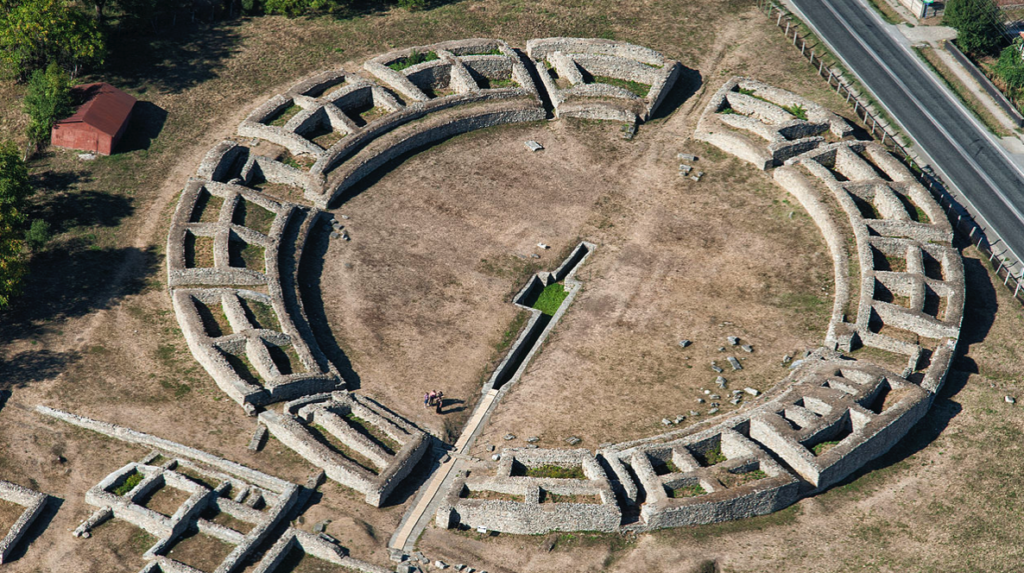
Remains of the amphitheatre of Ulpia Traiana Sarmizegethusa (Wikimedia Commons)
In A.D. 158, the Dacians revolted, and this event brought about more change in the province. This brought about the creation of what has become known as the ‘Three Dacias’.
The emperor decided to add two more regions to the already existing Dacia Porolissensis by creating Dacia Apulensis, and Dacia Malvensis. Each zone was governed by an equestrian procurator, each of whom was responsible to the senatorial governor of the province.
The administrative capital of Dacia Porolissensis was Porolissum. This had been a military camp established by Trajan during the second invasion in A.D. 106. The purpose of this settlement was to defend the main route through the Carpathian Mountains. Five thousand auxiliaries were stationed there, and there were temples built to Jupiter, Nemesis, and Liber Pater.

Reconstructed gate at Porolissum
The capital of Dacia Apulensis was Apulum, modern Alba Iulia. This is the setting for part of the novel, The Dragon: Genesis.
Apulum was the largest city in Roman Dacia and was the base of the XIII Gemina legion. It was also the seat of the military governor, which was not a coincidence, as the profitable goldmines of Dacia were located just to the west of Apulum and its legion.
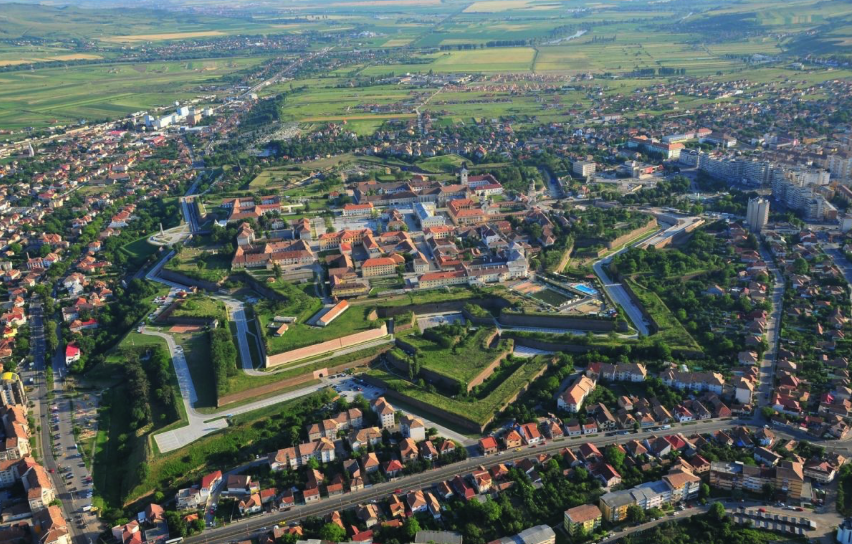
Modern Alba Iulia, Romania, with the medieval castle on the site of the fortress of Roman Apulum
The third of the new Dacias was Dacia Malvensis, the capital of which was Romula (also known as Malva) in the south. This settlement was a municipium at first, but later it became an official colonia under Septimius Severus (A.D. 193-211).
Romula had two forts and was the base for men from the VII Claudia, XXII Primigenia, as well as detachments of Syrian archers.
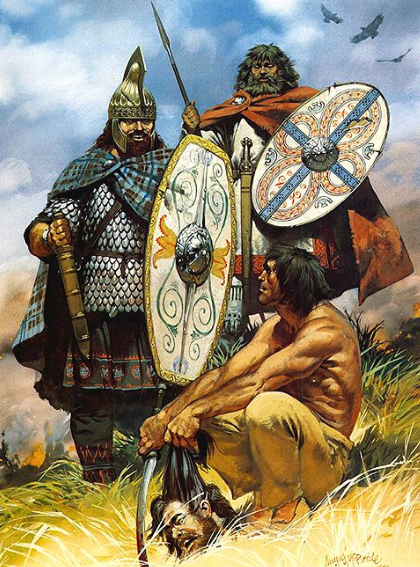
Dacian Warriors of the 2nd century A.D. (Angus McBride)
Peace however, even during the reign of Antoninus Pius, was fleeting.
In A.D. 161, upon the death of Antoninus Pius, there was trouble in Dacia once more.
The alliance between the Free Dacians and their Sarmatian allies came to fruition during the reign of Marcus Aurelius.
The three Dacias were merged once again, and the mega province of Tres Daciae was created. The capital was moved to Ulpia Traiana Sarmizegethusa, and two full legions were on the alert – the XIII Gemina at Apulum, and the V Macedonica at Potaissa.
War had returned to Dacia and, unlike the long period of Pax Romana enjoyed by Antoninus Pius, it would occupy Marcus Aurelius in the region for most of his reign.
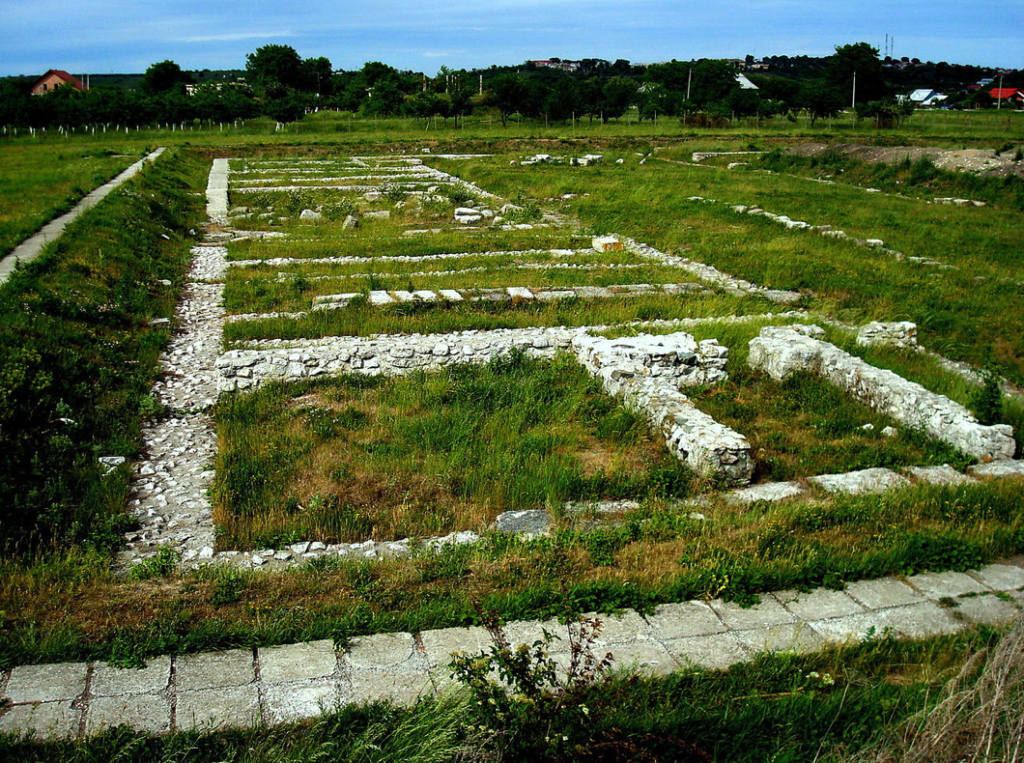
Ruins of Potaissa, base of V Macedonica Legion in Dacia
Much attention was given to Dacia over the years, especially to its administration. It was obvious that the province was of great importance to Rome, not only strategically, but more so economically.
There was, however, further conflict there through the reign of Emperor Commodus (sole emperor from A.D. 180-192).
During the reign of Septimius Severus, the Pax Romana was restored in Dacia and the frontiers strengthened. Severus’ laws allowing soldiers to marry helped them to integrate and form family bonds across the Empire, including in Dacia.
There is no doubt that the history of Rome’s presence in Dacia was long and varied, but there can be no doubt that Rome left its mark in that land, and it is a mark that can still be seen and felt to this day.
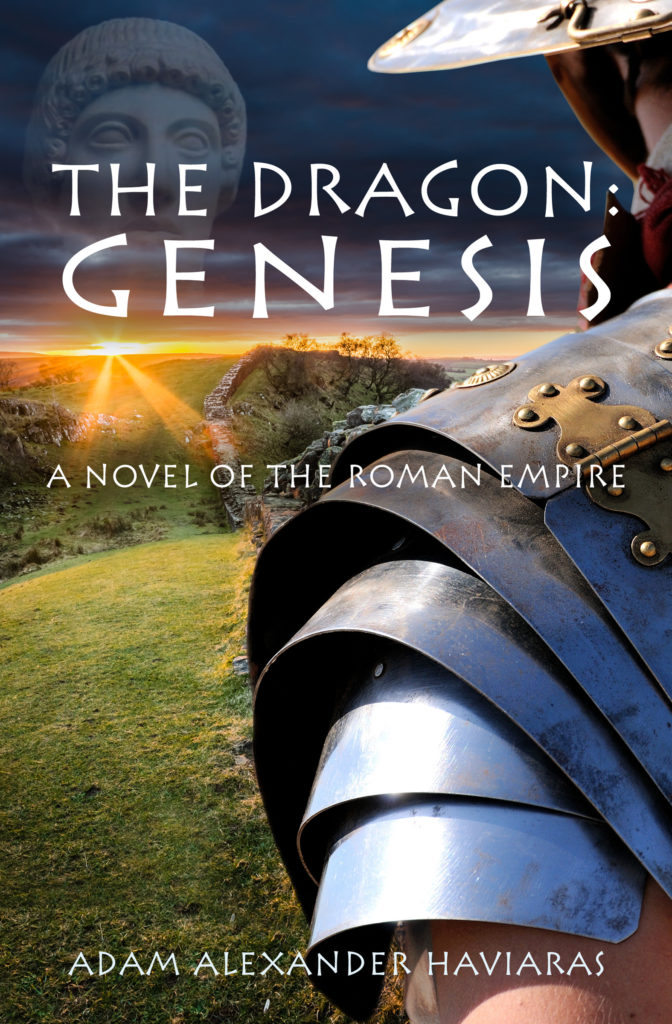
Be sure to stay tuned for the next part in The World of The Dragon: Genesis when we will take a look at the Evocati of ancient Rome.
Thank you for reading.






Yet another brilliant post. Thanks Adam My thoughts here are, that these campaigns must have cost a fortune, not only from the destruction point of view but also the supplying of food, armour weapons and other necessities needed., for so many of the Legions.
Thank you for your comment, Rita. I’m glad you enjoyed this post 🙂 It is hard to fathom the cost of an invasion campaign such as the invasion of Dacia, especially when war is a multi-billion dollar industry today. And Trajan’s campaign was not the biggest ever. Severus’ campaign into Parthia had many more legions! So yes, good point. They needed to succeed and find the infamous Dacian gold hordes to make it all worth it!